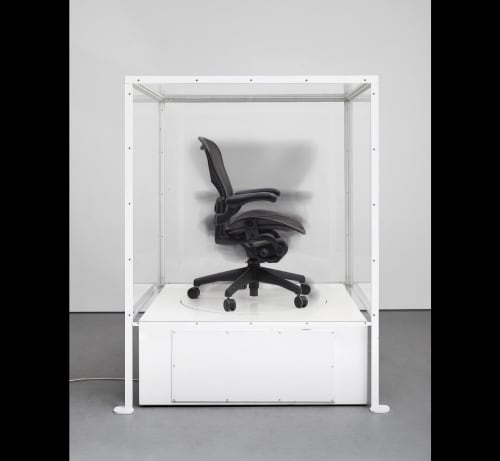Flannel shirts, scrunchies and slap bracelets? Or do you remember it as the decade of the culture wars and the debate over political correctness? Even though the new exhibition opening at the Jepson this week takes its name from a famous Nirvana hit, its themes owe more to the latter than the former.
June 11 is the opening reception for “Come As You Are: Art of the 1990s” and though the opening night party will feature classic ’90s music, free hors d’oeuvres and yes, slap bracelets, the ideas explored by the art in the upstairs galleries draw more from the socio-political backdrop of AIDS activism and the Theatre of the Absurd of the racial and sexual dynamics of that era.
Curator Alexandra Schwartz, who will be giving the opening night lecture, is a former curator at MoMA and founding curator of contemporary art at Montclair Art Museum in New Jersey, and she knows her stuff. Schwartz has assembled what she hopes is the definitive overview of the visual art of the ’90s. Of course, it’s too early to tell if this is the show to end all ’90s art shows since this is the first of its kind to survey artists exclusively working in America during that period, but Schwartz has definitely succeeded in creating a collection of artists who helped define the art of the 1990s.
Schwartz uses the historical bookends of the fall of the Berlin Wall in 1989 and the terrorist attacks on Sept. 11, 2001, to frame her exhibition. Within that framework, she uses some of the most iconic artists of that time period to explore themes of class, race, gender and sexual identity. Schwartz also used the jumping-off point of the 1993 Whitney Biennial to inform the show, as that was a pivotal moment in the contemporary American arts scene. Reviled by some at the time, that year’s Whitney Biennial laid the groundwork for much of the intellectual landscape artists have explored since then because it was seen at the time as such a radical departure from previous Biennials due to the fact that the exhibited work was much more conceptual and politically charged than previous incarnations.
As a recent article about the exhibition in Hyperallergic notes, the ’90s was a decade that can be vaguely defined by the growth of globalization — particularly in the arts scene — an incipient Internet culture and the emergence of identity politics. And all those areas are explored in depth in this show.
As Erin Dunn, Telfair’s Middleton Curatorial Fellow, explains, “People can come in and appreciate these works on an aesthetic level, but they also have to work a little bit to really get to the meat of the issues. The show has humor and quirk to it as well, but it’s also juxtaposed with works that are a lot deeper … A lot of people may come into this show with no real expectations, but it’s really dynamic and compelling and once they enter the space, they’ll be blown away.”
In fact, Schwartz has amassed something of a who’s who of the ’90s art scene. Some of the artists, like Doug Aitken, Vik Muniz, Kara Walker and others, are still working today and have made even bigger names for themselves. And yet others have receded into the mist of art history. But it can’t be overstated how important this show is. Savannah is lucky to be one of only four locations hosting this exhibition, so catch it while you can.
Sadly, some of the marquee names like Matthew Barney and John Currin aren’t included in the Jepson show, but the aforementioned Muniz, Walker and Aiken are, along with Nikki Lee, Glenn Ligon, Catherine Opie and many others. It should also be noted that though there is humor and quirk in the show, as Dunn mentions, there is also some very challenging work on view, like the brilliantly transgressive imagery of Manuel Ocampo, one of the few painters included and an alumni of the infamous 1992 “Heller Skeller” show in Los Angeles.brilliantlyamous 1992 “Helter Skelter” show in Los Angeles.
From the sexually denuded futuristic Ken doll rendering of artists Aziz + Cucher to the inflammatory racial imagery of Gary Simmons and Kara Walker, there are certainly works that will raise eyebrows. But it’s not all gloom and doom. There are lighter, more whimsical works, like the spinning Internet startup chair of Glenn Kaino and the early “net art” of Mark Napier, though even those works explore more than what’s on the surface.
Make no mistake, this is an incredibly substantial statement of an exhibition and Savannah should be proud to host such a well-rounded and expertly curated show. It makes a wonderful counterpoint to the other exhibitions currently on view, which are alternately fun and flirty and historically minded. The Telfair seems to be doing a fabulous job of offering something for everyone, so if you’re looking for a “serious” art show, look no further. Miss this one at your peril.
